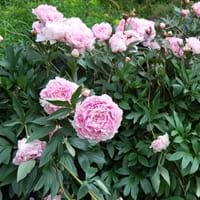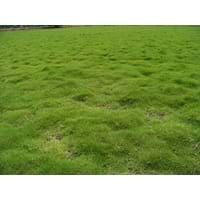Life Span
Perennial
Perennial
Type
Flowering Plants, Shrubs
Grass
Origin
Asia, North America, Southern Europe
South-Eastern Asia, Asia
Types
Aristocrat, Buckeye Belle, Henry Bockstoce , Abalone Pearl, Coral Supreme, Cytherea, Charlie's White
Korean Lawngrass , Meyer Zoysiagrass , Manilagrass
Habitat
Hillside, Woods
Lower slopes, Sandy stream banks
USDA Hardiness Zone
3-9
8-11
Sunset Zone
A3, 1a, 1b, 2a, 2b, 3a, 3b, 4, 5, 6, 7, 8, 9, 10, 11, 12, 13, 14, 15, 16, 17, 18, 19, 20, 22
H1, H2, 8, 9, 12, 13, 14, 15, 16, 17, 18, 19, 20, 21, 22, 23, 24
Habit
Clump-Forming
Clump-Forming
Minimum Width
Not Available
Flower Color
Pink, Red, White
Green, Light Green
Flower Color Modifier
Not Available
Bicolor
Fruit Color
Not Available
Non Fruiting Plant
Leaf Color in Spring
Dark Green
Light Green, Dark Green
Leaf Color in Summer
Dark Green, Green
Light Green
Leaf Color in Fall
Bronze, Dark Green, Green
Green, Yellow green, Gold
Leaf Color in Winter
Not Available
Gold, Tan
Leaf Shape
Compound
Grass like
Plant Season
Spring
Spring, Summer, Fall, Winter
Sunlight
Full Sun, Part sun
Full Sun, Partial Sun
Growth Rate
Slow
Very Slow
Type of Soil
Loamy
Loam, Sand
The pH of Soil
Neutral
Acidic, Neutral, Alkaline
Soil Drainage
Well drained
Average
Bloom Time
Spring, Summer
Not Available
Tolerances
Not Available
Drought, Salt, Soil Compaction
Where to Plant?
Ground, Pot
Ground
How to Plant?
Grafting, Seedlings, Stem Planting, Transplanting
Sod, Sprigging or Stolonizing
Plant Maintenance
Medium
Medium
Watering Requirements
Does not require lot of watering, It cannot sustain wet-feet, Keep the ground moist but not water-logged, Needs watering once a week, Prefer drip-irrigation instead of Over-head watering, Water occasionally
weekly regular
In Summer
Lots of watering
Lots of watering
In Spring
Moderate
Moderate
In Winter
Average Water
Average Water
Soil pH
Neutral
Acidic, Neutral, Alkaline
Soil Type
Loamy
Loam, Sand
Soil Drainage Capacity
Well drained
Average
Sun Exposure
Full Sun, Part sun
Full Sun, Partial Sun
Pruning
Do not prune during shooting season, Prune to control growth, Remove dead or diseased plant parts, Remove deadheads
Remove damaged leaves, Remove dead branches, Remove dead leaves
Fertilizers
All-Purpose Liquid Fertilizer
All-Purpose Liquid Fertilizer
Pests and Diseases
Botrytis Blight, Leaf spot, Stem spot, Viruses
Army-worms, sod webworms
Plant Tolerance
Drought
Drought
Flowers
Yes
Insignificant
Flower Petal Number
Semi-Double
Single
Foliage Texture
Coarse
Fine
Foliage Sheen
Glossy
Matte
Allergy
Not Available
Not Defined
Aesthetic Uses
Beautification, Bouquets, Showy Purposes, Used for decorating walls, fences, gates, hedges, etc.
Beautification, Cottage Garden, Farmland, Ground Cover, Landscape Designing
Beauty Benefits
Not Available
Not Available
Environmental Uses
Air purification
Provides ground cover, soil erosion prevension on hill slopes
Medicinal Uses
Cough, Gout, Headache, Heartburn, Kidney problems, Upset stomach, Urinary tract problems
Unknown
Part of Plant Used
Flowers, Root, Seeds
Whole plant
Other Uses
Showy Purposes, Used as Ornamental plant, Used for fragrance
Used as a golf course turf
Used As Indoor Plant
No
Insignificant
Used As Outdoor Plant
Yes
Yes
Garden Design
Feature Plant, Foundation, Mixed Border
Container, Edging, Groundcover, Lawns and Turf, Mixed Border, Rock Garden / Wall, Tropical
Botanical Name
Paeonia lactiflora
ZOYSIA tenuifolia
Common Name
Herbaceous Peony
Korean Velvet Grass
In Hindi
Herbaceous peony
कोरियाई मखमल घास
In German
Krautige Pfingstrose
Korean Samt Gras
In French
pivoines herbacées
herbe de velours coréenne
In Spanish
peonía herbáceas
hierba de terciopelo de Corea
In Greek
ποώδη παιωνία
hierba de terciopelo de Corea
In Portuguese
peônia herbáceas
grama de veludo coreano
In Polish
piwonii zielnych
Not Available
In Latin
herbaceum AGLAOPHOTIS
Carl herba
Phylum
Magnoliophyta
Angiosperms
Class
Magnoliopsida
Monocotyledonae
Order
Not Available
Cyperales
Family
Paeoniaceae
Poaceae
Genus
Paeonia
Zoysia Willd
Clade
Angiosperms, Core eudicots, Eudicots
Commelinids
Tribe
Not Available
Cynodonteae
Subfamily
Not Available
Chloridoideae
Importance of Chinese Peony and Korean Velvet Grass
Want to have the most appropriate plant for your garden? You might want to know the importance of Chinese Peony and Korean Velvet Grass. Basically, these two plants vary in many aspects. Compare Chinese Peony and Korean Velvet Grass as they differ in many characteristics such as their life, care, benefits, facts, etc. Every gardener must at least have the slightest clue about the plants he wants to plant in his garden. Compare their benefits, which differ in many ways like facts and uses. The medicinal use of Chinese Peony is Cough, Gout, Headache, Heartburn, Kidney problems, Upset stomach and Urinary tract problems whereas of Korean Velvet Grass is Unknown. Chinese Peony has beauty benefits as follows: Not Available while Korean Velvet Grass has beauty benefits as follows: Not Available.
Compare Facts of Chinese Peony vs Korean Velvet Grass
How to choose the best garden plant for your garden depending upon its facts? Here garden plant comparison will help you to solve this query. Compare the facts of Chinese Peony vs Korean Velvet Grass and know which one to choose. As garden plants have benefits and other uses, allergy is also a major drawback of plants for some people. Allergic reactions of Chinese Peony are Not Available whereas of Korean Velvet Grass have Not Defined respectively. Having a fruit bearing plant in your garden can be a plus point of your garden. Chinese Peony has no showy fruits and Korean Velvet Grass has no showy fruits. Also Chinese Peony is flowering and Korean Velvet Grass is not flowering . You can compare Chinese Peony and Korean Velvet Grass facts and facts of other plants too.





